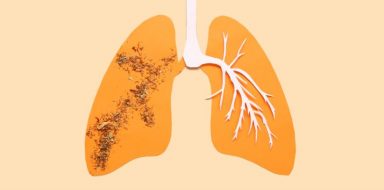Signs, Myths, Facts and Treatment Options
Breast cancer is a profound health concern and a leading cause of mortality among women worldwide. While often associated with younger age groups, menopausal women face unique considerations that merit careful attention. We will explore treatment options for breast cancer, including TRODELVY, a prescription medication used primarily to treat certain types of breast cancer. It combines a chemotherapy drug with a monoclonal antibody, allowing it to deliver the chemotherapy directly to cancer cells.
Signs of Breast Cancer
As with any disease, knowing the warning signs and risk factors is crucial for early detection and effective treatment. Here are ten warning signs of breast cancer.
Menopause and constipation can go hand in hand, causing uncomfortable bowel movements. Here are five causes to be aware of.
1. Changes in breast size or shape: Any noticeable changes in the size or shape of one breast or both.
2. Lump or thickening: A lump or thickening in the breast tissue or underarms should never be ignored. It is essential to get a mammogram and consultation with a doctor to determine the cause.
3. Nipple discharge: If there is any discharge from the nipple, particularly if it is bloody or clear, it warrants further investigation.
4. Changes in the nipple: Any changes in the nipple, such as inward turning, scaliness or redness, should be evaluated.
5. Skin changes: Dimpling or puckering of the breast skin, or any unusual redness, rashes or swelling, should not be overlooked.
6. Breast pain or tenderness: While often unrelated to breast cancer, persistent breast pain or tenderness should be checked by a medical professional.
7. Unexplained weight loss: Sudden and unexplained weight loss can sometimes be an indication of an underlying medical condition, including breast cancer.
8. Fatigue: Chronic fatigue or extreme tiredness that persists despite adequate rest could be a symptom of breast cancer or other health issues.
9. Changes in breast texture: Skin texture resembling an orange peel, with visible pores and indentations, can indicate an underlying problem.
10. Family history: If close family members, such as a mother, sister or daughter, have been diagnosed with breast cancer, it increases the risk for other female relatives.
Understanding Breast Cancer
Breast cancer is characterized by the abnormal growth of cells in breast tissue. It can develop in any part of the breast, including the milk ducts, lobules or connective tissue. The exact cause of breast cancer remains unclear, but several risk factors can contribute to its development.
Risks of Breast Cancer in Menopausal Women
Menopause is a significant phase in a woman's life when hormonal changes occur. These hormonal fluctuations can alter the breast tissue, potentially increasing the risk of breast cancer. During menopause, the ovaries produce less estrogen and progesterone, impacting breast cell growth regulation.
Other risk factors for menopausal women include:
- Age: The risk of breast cancer increases with age, and the majority of cases occur in women over 50.
Obesity: Excess weight, particularly after menopause, is associated with an increased risk of breast cancer. - Hormone Replacement Therapy (HRT): Long-term use of combined hormone therapy, which includes both estrogen and progesterone, has been linked to an elevated risk of breast cancer.
- Early menstruation or late menopause: Women who started menstruating before the age of 12 or experienced menopause after the age of 55 have a higher risk of breast cancer.
- Genetic mutations: Certain inherited gene mutations, such as BRCA1 or BRCA2, significantly increase the risk of breast cancer.
Debunking Myths and Clarifying Facts about Breast Cancer
There are several myths and misconceptions surrounding breast cancer. It is crucial to debunk these myths to promote accurate information and better understanding.
Myth 1: Only older women need to worry about breast cancer.
Fact: While the risk does increase with age, breast cancer can affect women of any age, including younger women.
Myth 2: Men cannot get breast cancer.
Fact: Though rare, men can develop breast cancer, accounting for about 1% of breast cancer cases.
Myth 3: Finding a lump means it is breast cancer.
Fact: Not all breast lumps are cancerous. Many are benign cysts or other non-cancerous conditions. However, it is vital to consult a healthcare professional for proper diagnosis and evaluation.
Myth 4: Wearing an underwire bra can cause breast cancer.
Fact: Research has not found any substantial link between wearing a bra, including underwire bras and an increased risk of breast cancer.
Treatment Options for Breast Cancer
When diagnosed with breast cancer, various treatment options are available depending on the stage of cancer and individual circumstances. Here are some common treatments.
- Surgery: Options include lumpectomy (removal of the tumor and surrounding tissue) or mastectomy (removal of the entire breast).
- Radiation therapy: High-energy X-rays or other particles target and destroy cancer cells.
- Chemotherapy: Medications are used to kill cancer cells or stop their growth.
- Hormone therapy: Certain hormonal medications block hormone receptors and slow cancer growth.
- Targeted therapy: Medications specifically target cancer cells, interfering with their growth and division.
- TRODELVY: Trodelvy (generic name: sacituzumab govitecan) is a medication used in the treatment of certain types of cancer. It is an antibody-drug conjugate (ADC) that targets the Trop-2 protein, which is often overexpressed in various cancers. Trodelvy is designed to deliver chemotherapy directly to the cancer cells, thereby minimizing damage to normal cells.
Promoting Breast Cancer Awareness
Breast cancer poses a significant threat to menopausal women, and understanding the risks, warning signs and treatment options is crucial for early detection and effective treatment. By debunking myths and promoting awareness, we can empower women in their journey toward breast cancer prevention and early intervention, ultimately reducing the impact of this devastating disease.







